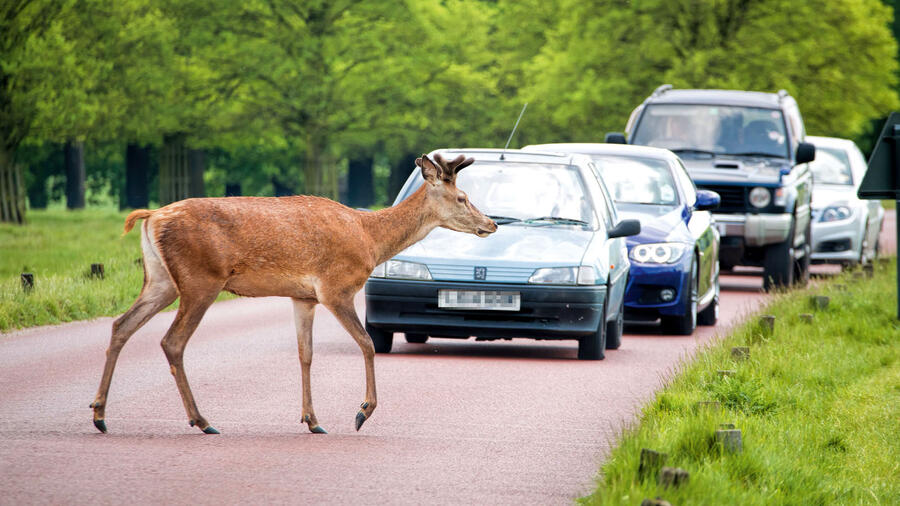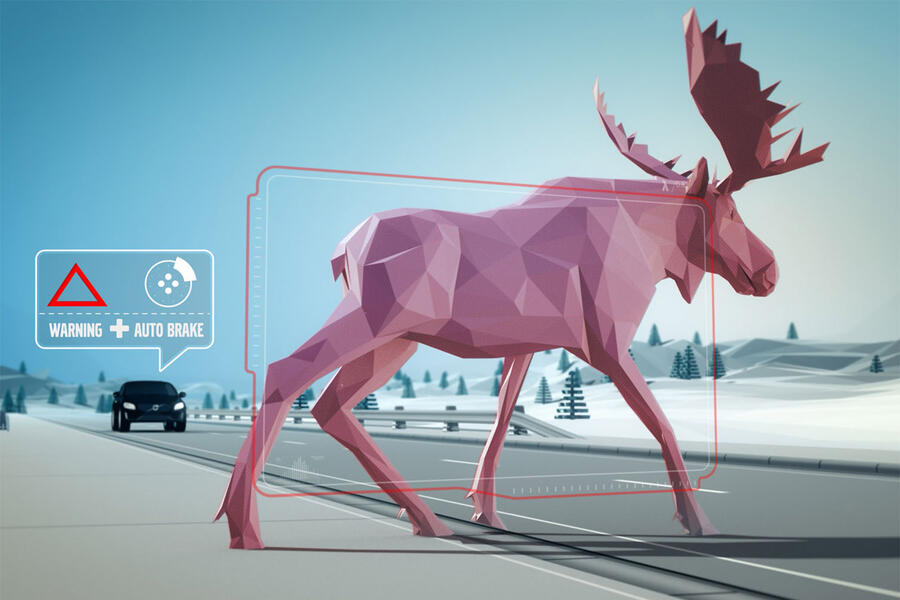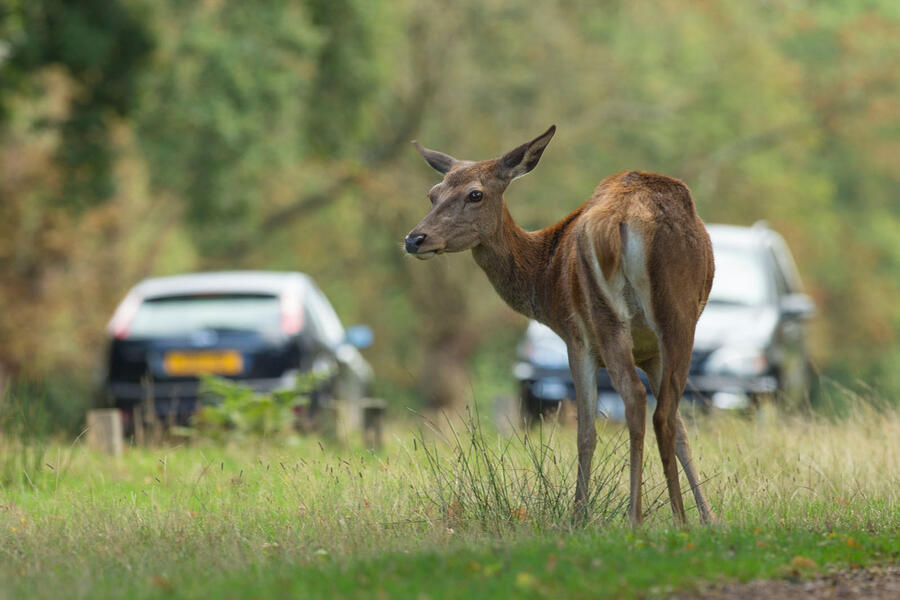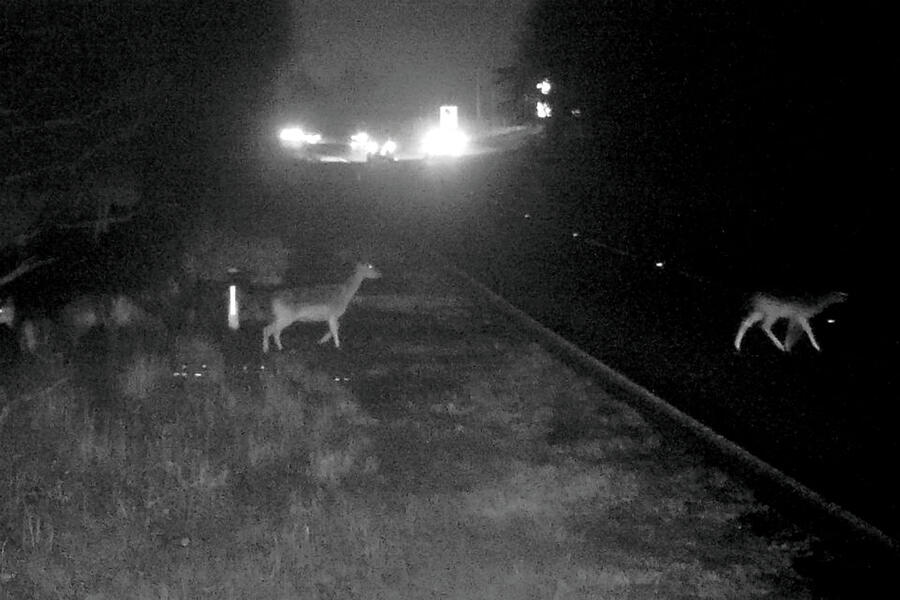It was 5.30am when Aaron Herringshaw set off from his home in Bournemouth at the wheel of his Mercedes-Benz C200 CDi estate to drive the 25 miles to his job as a chef in deepest Dorset. He liked the drive, especially at that time of the day when the sun is rising and the roads are quiet.
Then, as he was travelling along a familiar country road, a deer leapt out from a hedge immediately ahead of him. With no time to react, Herringshaw struck it. The deer bolted away.
Some months later, Herringshaw recalls the experience of hitting a large deer at about 40mph.
“It was terrifying,” he says. “The animal was literally right in front of me and there was nothing I could do. The Mercedes was a heavy car but it shook with the impact.”
Such was the damage to the 15-year-old Merc that Herringshaw’s insurer wrote it off. Herringshaw replaced it with a BMW 320d saloon of a similar age. However, within weeks, and on his same commute, he hit another deer in similar circumstances. Unfortunately, this time the deer was killed and, again, Herringshaw’s car was written off.
“Now, every time I drive on a country road, I’m fearful another deer will leap out in front of me,” says Herringshaw. “I see them all the time where other people don’t. I was never a fast driver but now I don’t do anywhere near the speed limit, which makes drivers behind me impatient.”

Has Herringshaw just been unlucky? In fact, according to several studies, 400 drivers and their passengers are injured in collisions involving deer each year, and possibly as many as 1000, and up to 20 are killed. As for the deer, it’s estimated that at least 40,000 are killed on UK roads each year, and possibly as many as 74,000. The peak months for collisions are May and October to January, and peak times are the early morning, when deer go in search of a mate or new territories.
However, with the exception of the figure quoted for human deaths, the numbers for human injuries and deer fatalities should be treated with caution. That’s because there is no legal requirement in the UK for incidents to be reported and the official records that do exist are often inconsistent between monitoring organisations.
Until more accurate data is available, motorists can only look abroad to gain a more precise picture. In Germany, for example, where collisions involving animals must be reported, there are 1000 non-fatal and 20 fatal driver and passenger casualties each year, arising from 220,000 deer-related incidents.
Whatever the true facts, it’s fair to say that deer collisions are a problem in the UK, as I discovered when I posted an account of my own near-deer experience on a popular motorists’ forum. It quickly attracted a stream of tales along similar lines, some of them quoted below but others withheld on grounds of taste, because a collision with a deer can be a messy affair…
Estimates of the size of the UK’s deer population vary between 1.5 and two million. It’s the highest for 1000 years and the figure is expected to rise further. According to surveys carried out by the British Deer Society, there are six recorded species of deer in the UK, each concentrated in different areas. In England, for example, muntjac and fallow deer dominate the Midlands, south and east, whereas red deer are mostly found in the centre and north of Scotland but also in Cornwall and Norfolk. Roe deer are spread evenly across the whole of the UK.
Useful pub quiz facts, perhaps, but knowing where particular deer dominate could save your life or, at least, your no-claims bonus. The point is that, depending on the species, deer can be very big animals. Red deer are the biggest. Indeed, they’re Britain’s largest land mammal. A fully grown male measures up to 1.37m at the shoulder and weighs up to 190kg. Fallow deer are smaller, males being up to 0.94m and 93kg. Muntjac are among the smallest, at 0.52m and 18kg, but a 30mph collision with one still has the potential to cause significant damage or injury.

The south-east of England experiences the UK’s highest number of deer-related road accidents and many councils have taken steps to keep motorists and deer apart. One such is Hertfordshire County Council.
“We have erected deer fences in locations that are known migration crossing points, especially on major new roads,” says Phil Bibby, the council’s cabinet member for highways and environment. “However, we cannot protect every road, so we urge motorists to be cautious, especially on rural and semi-rural roads.”
Meanwhile, in partnership with Highways England, some councils have been encouraging land owners, who have a right to control deer on their land, to increase culling rates. Other measures include erecting deer warning signs, especially at known crossing points, and in a few locations dynamic warning signs activated by the presence of deer.
Despite these and other measures, however, drivers are often blasé about the proximity of deer and who can blame them when deer are rarely seen in some locations, despite their numbers? Leonardo Gubert, senior ecologist at Highways England, warns against complacency.
“You may be well travelled and on a well-known route with signs warning of deer but never spotted the animals before, but the fact is these signs have been installed in areas with high deer numbers,” he says.
“There may only be one deer hidden in nearby foliage or woodlands or they may be a species that gathers in large groups with the possibility that when you see one and avoid it, others follow and dart into the road. It is vital drivers are aware of the presence and take extra care.”
If you find yourself behind Aaron Herringshaw on some quiet Dorset road, you can be sure that’s exactly what he’s doing.

See a deer? Here's what to do
Deer Aware offers drivers this advice for staying safe:
ï® Heed deer warning signs and drive with caution.
ï® Take extra care in the peak danger months of May and October to January.
ï® If you see one deer, expect more.
ï® At night, and so long as there is no oncoming traffic, use main beam, which will help pick out the eyes of deer. If you encounter one, dip your lights to avoid startling and ‘freezing’ it.
ï® Don’t over-swerve to avoid a deer, and if a collision is inevitable, hit it while maintaining full control of your car.
If you hit a deer...
ï® First, make sure you are safe.
ï® Do not approach the animal or attempt to calm it.
ï® Call the police.

Near-deer experiences
Here are some of the stories posted on a popular motorists’ forum by drivers who have had recent close encounters of the deer kind.
ï® “Last month, a deer jumped out in front of me, at about 3pm on a clear afternoon. I didn’t hit it but I did hit an oak tree and caused enough damage to write off my car.”
ï® “A deer jumped out from a gap in the hedge and I swerved, putting my car up a grass verge and clipping a hedgerow.”
ï® “I hit a deer the day after I picked up my brand-new Civic Type R.”
ï® “A mate hit one at 20mph, a week after buying an Audi S3. The impact took out the front bumper, grilles and anything plastic and triggered the airbags.”
ï® “I wrote off my Mini last year hitting a deer.”
ï® “I see a dead deer by the side of the road every two to three weeks on a 25-mile section in rural Devon.”
ï® “I was driving a Ford Puma when a muntjac leapt across the road. It obliterated the bumper, broke a headlight and bent the chassis.”
ï® “One massive stag caught the edge of my car’s windscreen pillar. Another hit the bonnet and smashed the lights. And another smashed the windscreen of my rental car.”
ï® “One very early summer morning, a massive stag leapt in front of me. Had I left the house half a second later, I might have been speared by its antlers!”
READ MORE
Hyundai to use AI to diagnose crash victims' injuries
Accident investigation: meet the people keeping our roads safe



















Join the debate
Add your comment
Living in 'deepest Dorset' we
Living in 'deepest Dorset' we have but one dual-carriageway within quite a large radius. It's also an area very attractive to deer, who like to graze right up to the edge of the road. Drivers rarely even pull away from the inside lane as they pass a group of deer - I expect many don't even see them. Being also a favourite spot for camera vans, people are often reported for travelling at speeds in excess of 90 mph on that road, one last year for 150+ mph. He claimed it was safe as the road was quiet. It would be interesting to see what a hitting a deer does to a Porsche at those speeds.
Deer carcasses locally (there were five within a hundred metres of each other on that dual-carriageway at one point last year) are often accompanied by the debris of whatever hit them. Like Mr Herringshaw, some of us have learnt to drive with that knowledge in mind.
In the space of a minute, I
In the space of a minute, I hit three mosquitos last summer. That was terrifying as well.
Has anyone else got some really boring 'I hit a...' stories?
Hence...
..Volvo and Saab vehicles having certain resistance to being damaged.